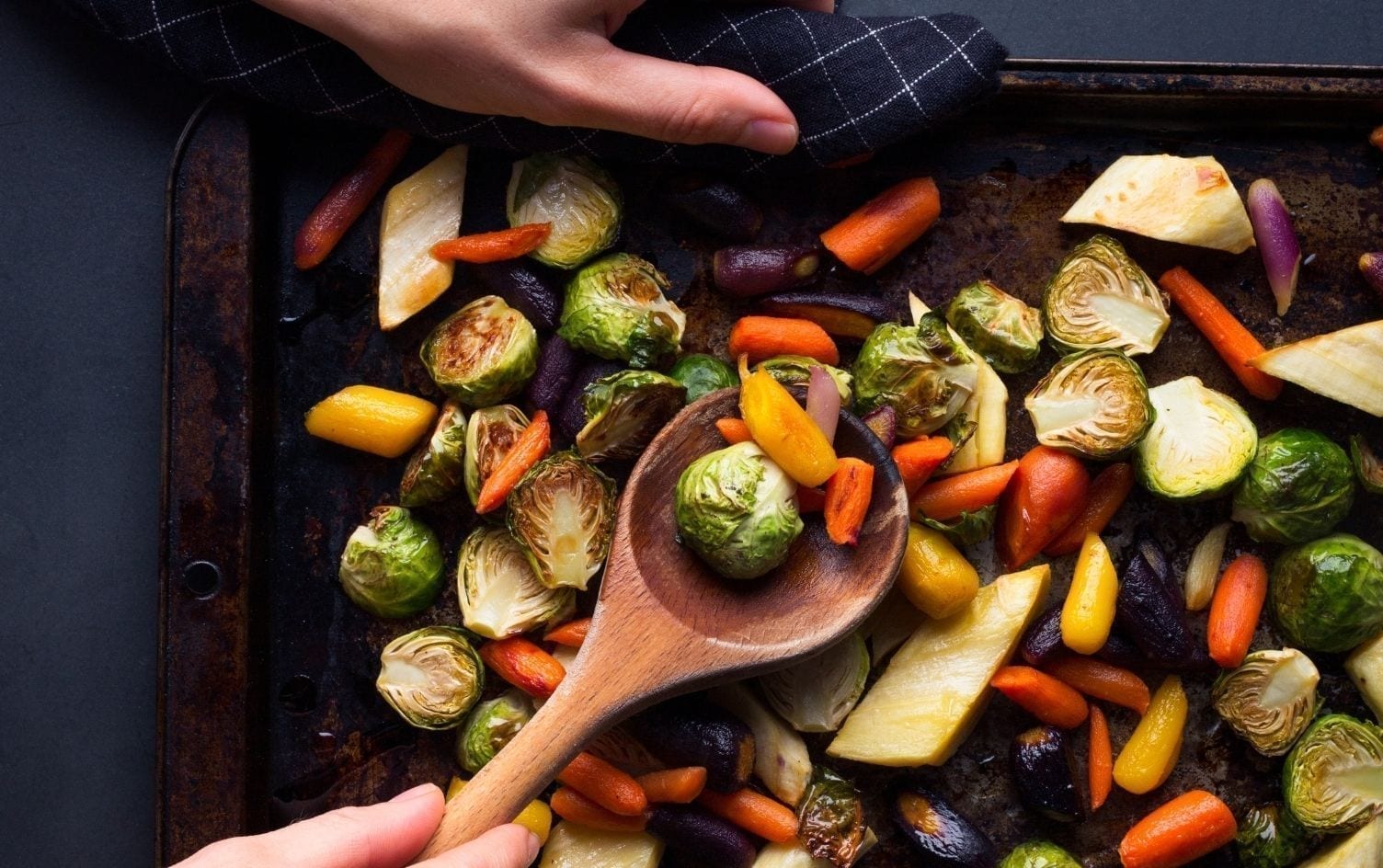Humans have been cooking food since our ancestors first discovered fire. Over the years, this natural heat source expanded our diets, allowing us to eat softer, safer and tastier foods. It’s still impacting our daily meals today by altering how our body digests, absorbs and uses nutrients.
THE CHEMISTRY OF HOW COOKING CHANGES FOOD
Heating up food changes its texture and flavor, usually for the better, as witnessed by everything from a perfectly seared steak and roasted vegetables to a cake, which starts as sticky batter and ends in fluffy delight. But it doesn’t stop there.
“Cooking food typically improves digestion and increases the absorption of many nutrients,” says Amy Goodson, RD, a board-certified specialist in sports dietetics. For example, the protein in cooked eggs is 180% more digestible than that of raw eggs, regardless of what you may have learned in “Rocky.” However, Goodson notes that some water-soluble vitamins and fat-soluble vitamins and minerals are reduced during cooking.
There’s also the issue of safety. Fruits and vegetables are fine to eat raw, but Goodson says to steer clear of raw meat and eggs, because cooking food effectively kills the bacteria that may cause foodborne illness. “In some instances, specifically with certain proteins, cooking is essential for safety.”
HOW DIFFERENT COOKING METHODS IMPACT NUTRITION
Not all cooking methods are created equal. Steaming is one of the best ways to preserve nutrients when cooking. Boiling, simmering and poaching are similar, as they all require immersing food in water. And for the most part, your food will retain its nutrients. According to Goodson, vitamin C and some B vitamins can be lost in the water, but you can get them back by using the water to make soup or a sauce.
When cooking with dry heat, like grilling and broiling, some B-vitamins and minerals can be lost when juice drips off the meat during cooking. Grilling can also form carcinogens when meat is cooked at a high temperature.
Roasting and baking are good methods for preserving nutrients, though the longer something cooks, the greater chance of losing something in the process. Sauteing and stir-frying tend to preserve nutrients as well. The addition of cooking with fat, like olive oil, improves the absorption of many plant compounds and antioxidants, says Goodson.
“Contrary to popular belief, microwaving is an easy, convenient and safe way to cook food,” she adds. Short cooking times and reduced exposure to heat preserve most of the nutrients in microwaved food, but there is often a small loss of vitamin C. “However, it appears to be a smaller loss than in other cooking methods.”
WHEN TO LEAVE IT RAW
For the most part, how you prepare fruits and vegetables is a tossup, as you get the nutrients whether raw or cooked. But there are exceptions, and Goodson says cooking often makes produce easier to digest and enjoy.
Cooking can also increase the absorption of some antioxidants like beta-carotene, lycopene and lutein. That means you get more of the nutrients in cooked foods like carrots and other orange and yellow produce, as well as tomatoes. Cooking asparagus and spinach makes their nutrients more bioavailable. Raw or undercooked legumes contain dangerous toxins called lectins, which can be eliminated by soaking and cooking. And the starch in potatoes is nearly indigestible until cooked.
But, while cooking produces many positive changes in food, there are certain ingredients that are better for you if left untouched. Raw broccoli and cabbage, for example, contain higher levels of cancer-fighting substances. The same goes for raw garlic, which includes anti-cancer sulfur compounds that degrade when heated. And raw onions are heart-healthier before they’re cooked.
THE BOTTOM LINE
Your best bet: Eat a varied diet that includes plenty of fruits and vegetables, cook the ones you prefer to eat cooked, and always cook your meat and eggs. Fortunately, with all of our different heating methods and self-starting fire sources, we’ve got it a lot easier than our pioneering predecessors.
Unlock an experience that’s like having a dietitian, trainer and coach at your fingertips. Sign up for Premium for expert guidance and tools to help you reach your personal health goals.




